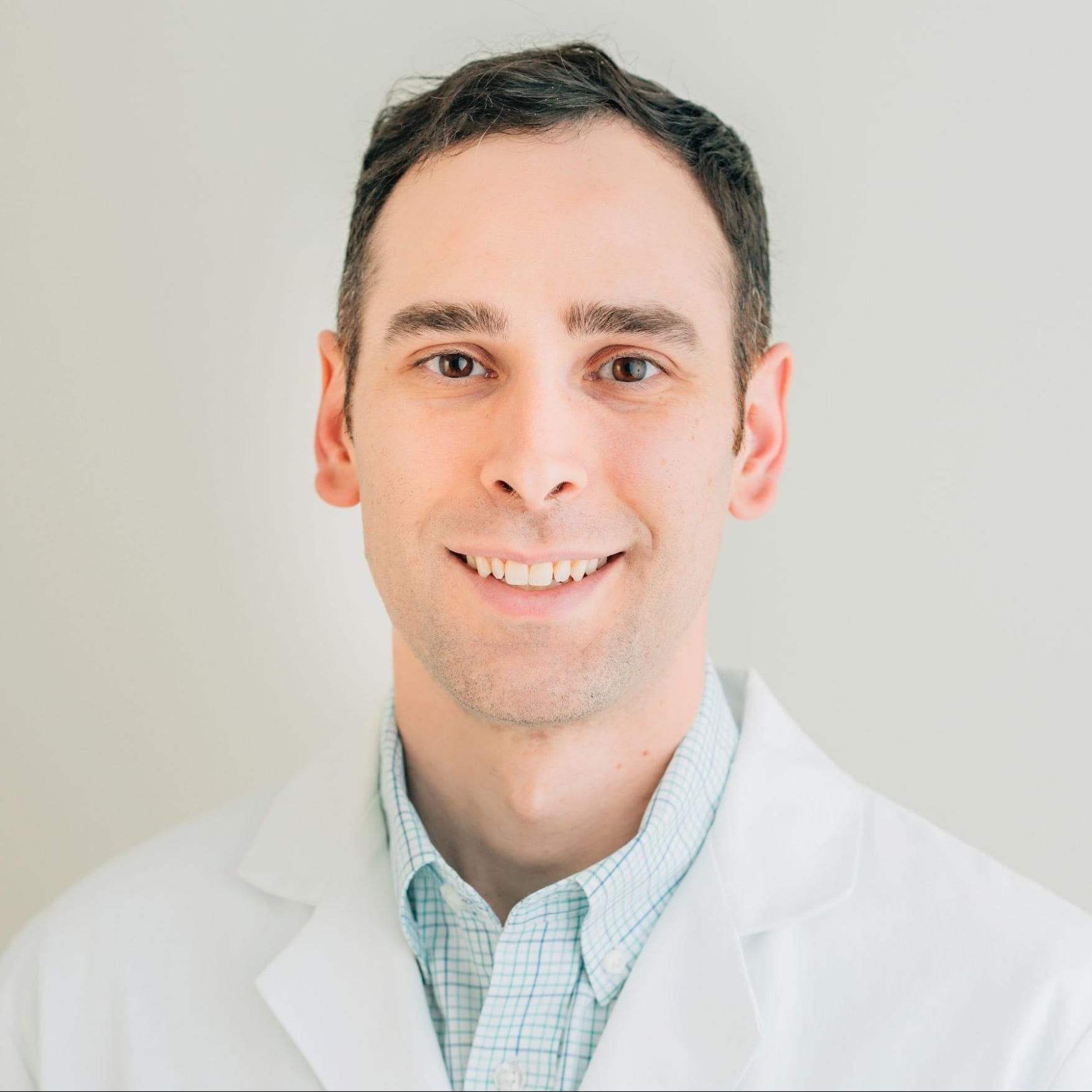Content
FDA approved for more than 25 years
The Hair Growth Cycle: 4 Stages Explained

How does your hair grow? Chances are that you have a vague idea, but for most people learning that hair growth occurs in a cycle is surprising.
Indeed, human hair goes through four distinct stages as it grows to full length, regresses, rests and eventually sheds over the course of several years, all before starting the cycle again.
Understanding hair growth is an important part of learning more about why your hair thins and falls out as you get older. It’s also useful knowledge for protecting your hair from the effects of male pattern baldness and for regrowing your hair if you’re prone to hair loss.
Below, we’ve explained how hair grows, the stages of hair growth and the process of the hair growth timeline.
Content
The Four Hair Growth Stages
How does hair grow?
Like your skin, nails and other parts of your body, your hair constantly goes through a complex growth process of hair growth phases, in which each follicle is cycling through on a different schedule than most of its peers.
Hair growth is a continuous process of four phases — anagen (growth); catagen (slowing); telogen (resting) and exogen (shedding). Your hair grows about one inch every two months. This translates to about three inches of hair growth in a six-month period and six inches of hair growth over the course of one year. A lifetime of hair growth would represent about 30 cycles.
It’s important to understand that your hair is made up of two separate structures, both of which play a role in growth.
The first structure is the hair follicle, which lies under the surface of your scalp. Your hair follicles are living structures that produce new hairs through a complex process involving the creation of new cells.
The second structure is the hair shaft. This is the part of your hair that grows out from your epidermis and includes most of the visible follicular structure. Here you can see the outer layer (cuticle) and assess its strength and health.
Each hair shaft grows from the hair bulb — an area of the hair follicle that converts nutrients into the keratinized cells that make up your hair.
The hair growth process (or hair growth cycle, as it’s often referred to in medical literature) has three distinct stages:
The anagen (growth) phase. This is the active growing phase, during which your hair grows to its full length.
The catagen (regression) phase. This phase marks a transition of the hair from active growth into a resting phase.
The telogen (resting) phase. During this phase, your hair follicle becomes dormant and doesn’t actively grow.
Many hair growth experts also include a fourth phase in this process, which is referred to as the exogen, or shedding, phase.
During this phase, the hair fiber detaches from the hair follicle, allowing a new hair to grow from the follicle in its place.
Check out our other article to learn what new hair growth looks like.
Every stage of the hair growth cycle lasts for a different amount of time, meaning your hairs may grow for years before entering the catagen, telogen and exogen phases.
Below, we’ve explained each hair growth phase in more detail to help you better understand the hair growth process.
The Anagen (Growing) Phase
During the anagen phase, your hair actively and continuously grows. About 85 to 90 percent of your hairs are in this stage at any given time.
While all of the hair on your body goes through the anagen phase, the duration of this phase varies depending on the location. One thing you might be wondering is how long the hair growth cycle time is from beginning to end. On average, your scalp hair grows for between two and six years before reaching the end of the anagen phase. In comparison, the anagen phase for thigh hair is around two months.
This time variation in the anagen phase is the reason why the hair on your scalp generally grows much longer than the hair on your face and body.
The Catagen (Regression) Phase
After passing through the anagen phase, each hair follicle enters the catagen phase. Also referred to as the regression or transition phase, this period of the growth cycle involves the formation of a club hair — a hair shaft that’s detached from the blood supply of the follicle.
During the catagen phase, your hair stops actively growing and the hair follicle, which previously supplied the hair with nutrients, shrinks slightly. This phase lasts for several weeks.
The Telogen (Resting) Phase
During the telogen phase, the hair follicle rests. The hair shaft also remains in a resting state, with no ongoing growth.
Between 10 and 15 percent of the hairs on your scalp, face and body are in this phase at any given time.
Like the anagen phase, the telogen phase varies in length. Most body hair has a short telogen phase that only lasts for a few weeks, while scalp hair can go through a telogen phase of up to one year.
Certain health issues, such as stress, infections or illnesses that cause fever, may cause your hair to prematurely enter the telogen phase of its growth cycle, resulting in a form of hair loss that’s referred to as telogen effluvium.
The Exogen (Shedding) Phase
As new hair starts to grow from the hair follicle, the old hair enters into the exogen phase, or shedding phase.
During this phase, the hair fiber detaches from your scalp and falls out. It’s normal to shed about 50 to 100 hairs every day through this process.
You may notice these hairs on your pillowcase, in your hairbrush or stuck inside your shower drain.
Since each hair is replaced by a new one growing from the same follicle, the hair shedding that occurs in the exogen phase doesn’t contribute to male pattern baldness.
All about hair, here
What Disrupts the Hair Growth Cycle?
Just like other important processes in your body, the hair growth process can be interrupted and affected by extrinsic factors like stress, malnutrition and illness.
For example, early hair shedding often occurs as a result of nutritional deficiencies, rapid weight loss, excessive amounts of stress and illnesses or injuries.
When your hair growth cycle is interrupted, it often takes several months before you’ll notice any difference in your hair.
This is because your hair needs to go through the telogen phase of the hair growth cycle before shedding.
Since the telogen phase can last for several months, hair shedding often starts a few months after the triggering event.
For example, if you go through an illness that gives you a fever (a common cause of hair growth cycle interruption and telogen effluvium), you may not experience any hair shedding until one to six months after the causative event.
Other, potentially permanent causes of loss of hair include androgenetic alopecia (male pattern baldness), alopecia areata (an autoimmune condition) and injuries to the head, scalp and follicles.
Male Pattern Baldness and the Hair Growth Process
Male pattern baldness is the most common form of hair loss in men. Unlike telogen effluvium, which is temporary, hair loss due to male pattern baldness tends to be permanent.
This form of hair loss is caused by a combination of your genetic makeup and the effects of the hormone dihydrotestosterone, or DHT.
Over time, DHT can bind to receptors in your scalp and cause your hair follicles to go through a process called miniaturization.
During this process, your hair follicles shrink and eventually stop producing new hairs.
Some research suggests that DHT stimulates TGF-β1, TGF-β2, DKK1 and interleukin 6, which are proteins that play a role in your hair growth cycle.
Not all of your hair follicles are sensitive to DHT. Most of the time, male pattern baldness affects the follicles around your hairline and crown, without any effect on the hair at the back and sides of your scalp.
Will you join thousands of happy customers?
4.5 average rating
Hair care is about more than cleaning and styling — in fact, hair health is determined in large part by how you care for it.
Simple habits can help you to promote healthy hair growth and avoid shedding throughout your hair’s growth cycle. Try to:
Eat a Balanced, Nutrient-Rich Diet
Countless vitamins and minerals, including vitamins A, B7, B12 and essential nutrients such as zinc and iron, all play key roles in your body’s process for growing and maintaining your hair.
Try to eat a balanced, nutritious diet that’s built around fruits, vegetables, whole grains and lean, healthy sources of protein.
Check Your Health Regularly
Telogen effluvium, a common cause of hair shedding, is often linked to chronic health issues such as hypothyroidism, iron deficiency or sudden changes in your production of important hormones.
Many of these issues can be detected through routine blood testing, making it important to get yourself checked regularly by your primary healthcare provider.
Take Steps to Relieve Stress
Stress is a common cause of telogen effluvium. It’s also a major risk factor for issues such as high blood pressure, depression and certain forms of anxiety.
If you’re feeling stressed, try techniques like deep breathing and meditation to promote relaxation. Making changes to your habits, lifestyle and working environment may also help to reduce your stress levels.
If You Smoke, Try To Quit
Almost everyone is aware of the negative effects smoking can have on your cardiovascular health and risk of developing lung cancer. Fewer people know that smoking can also damage your hair and contribute to hair loss.
Research shows that the toxins in cigarette smoke can reduce blood flow in your scalp and damage the DNA of your hair follicles.
How to Restart the Hair Growth Cycle
Since hair loss can occur for several reasons, there’s no one-size-fits-all method for regrowing hair. The most effective way to regrow your hair will depend on how you lost it.
If your hair loss is caused by stress, the best way to reverse the effects and regrow your hair is to remove the source of stress from your life. (This is easier said that done, of course).
For severe stress, it’s always a good idea to speak to a licensed healthcare provider and learn more about the solutions that are available to you.
If your hair loss is caused by a nutritional deficiency, making changes to your diet may help to restart your hair growth cycle and promote regrowth.
If you’re experiencing early symptoms of male pattern baldness, such as a receding hairline or hair loss around your crown, your best bet is to treat it with medication.
Medication for Hair Growth
There are two FDA-approved medications currently available to treat male pattern baldness. The first finasteride — a prescription medication that blocks DHT.
It’s available with a prescription and works by stopping your body from producing the hormone that causes baldness to develop.
The second is minoxidil — a topical, over-the-counter medication that works by encouraging your hairs to enter into the anagen phase of the growth cycle.
Minoxidil may also help to stimulate blood flow in your scalp to provide your hair follicles with the nutrients they need to produce strong, healthy hair.
We offer finasteride and minoxidil online. You can purchase both hair loss medications together in our Hair Power Pack.
It’s important to understand that you can only regrow hair in the areas of your scalp with healthy, active hair follicles.
If you’ve lost hair in a specific part of your scalp for several years, such as a receding hairline, it may not grow back, even with daily finasteride and minoxidil use.
There’s also no guarantee that the hair you’ve lost due to male pattern baldness will grow back, even in areas where it’s only recently started to thin.
It’s best to think of hair regrowth as a bonus, not as a predictable effect of using finasteride and minoxidil.
Hair loss treatments, delivered
The better you understand the hair growth process, the easier it is to tell the difference between regular hair shedding and male pattern baldness.
This understanding can help you to identify the signs of male pattern baldness and take action quickly to protect and keep your hair.
It can also save you a lot of stress if you notice shedding but recognize that it’s just the natural result of your hair follicles entering into the final phase of the growth cycle.
If you’re starting to lose your hair and want to take action, you can view our full range of proven, science-based hair loss medications online.
You can also find out more about the common signs of hair loss, risk factors and treatments in our detailed guide to male pattern baldness.
13 Sources
- Higgins, C.A., Westgate, G.E. & Jahoda, C.A.B. (2009, September 1). From Telogen to Exogen: Mechanisms Underlying Formation and Subsequent Loss of the Hair Club Fiber. Journal of Investigative Dermatology. 129 (9), 2100-2108. Retrieved from https://www.jidonline.org/article/S0022-202X(15)34463-8/fulltext
- Shenenberger, D.W. & Utecht, L.M. (2002, November 15). Removal of Unwanted Facial Hair. American Family Physician. 66 (10), 1907-1912. Retrieved from https://www.aafp.org/afp/2002/1115/p1907.html
- Hoover, E., Alhajj, M. & Flores, J.L. (2020, July 27). Physiology, Hair. StatPearls. Retrieved from https://www.ncbi.nlm.nih.gov/books/NBK499948/
- Do You Have Hair Loss or Hair Shedding? (n.d.). Retrieved from https://www.aad.org/public/diseases/hair-loss/insider/shedding
- Hughes, E.C. & Saleh, D. (2020, June 9). Telogen Effluvium. StatPearls. Retrieved from https://www.ncbi.nlm.nih.gov/books/NBK430848/
- Almohanna, H.M., Ahmed, A.A., Tsatalis, J.P. & Tosti, A. (2019, March). The Role of Vitamins and Minerals in Hair Loss: A Review. Dermatology and Therapy. 9 (1), 51–70. Retrieved from https://www.ncbi.nlm.nih.gov/pmc/articles/PMC6380979/
- Malkud, S. (2015, September). Telogen Effluvium: A Review. Journal of Clinical & Diagnostic Research. 9 (9), WE01–WE03. Retrieved from https://www.ncbi.nlm.nih.gov/pmc/articles/PMC4606321/
- Relaxation techniques for stress. (2020, August 13). Retrieved from https://medlineplus.gov/ency/patientinstructions/000874.htm
- Trüeb, R.M. (2003). Association between smoking and hair loss: another opportunity for health education against smoking? Dermatology. 206 (3), 189-91. Retrieved from https://pubmed.ncbi.nlm.nih.gov/12673073/
- Hereditary-Patterned Baldness. (2019, April). Retrieved from https://www.health.harvard.edu/a_to_z/hereditary-patterned-baldness-a-to-z
- Inui, S. & Itami, S. (2013, March). Androgen actions on the human hair follicle: perspectives. Experimental Dermatology. 22 (3), 168-71. Retrieved from https://pubmed.ncbi.nlm.nih.gov/23016593/
- Zito, P.M., Bistas, K.G. & Syed, K. (2020, October 27). Finasteride. StatPearls. Retrieved from https://www.ncbi.nlm.nih.gov/books/NBK513329/
- Badri, T., Nessel, T.A. & Kumar, D.D. (2020, May 4). Minoxidil. StatPearls. Retrieved from https://www.ncbi.nlm.nih.gov/books/NBK482378/
Editorial Standards
Hims & Hers has strict sourcing guidelines to ensure our content is accurate and current. We rely on peer-reviewed studies, academic research institutions, and medical associations. We strive to use primary sources and refrain from using tertiary references. See a mistake? Let us know at blog@forhims.com!
This article is for informational purposes only and does not constitute medical advice. The information contained herein is not a substitute for and should never be relied upon for professional medical advice. Always talk to your doctor about the risks and benefits of any treatment. Learn more about our editorial standards here.
Knox Beasley, MD
Dr. Knox Beasley is a board certified dermatologist specializing in hair loss. He completed his undergraduate studies at the United States Military Academy at West Point, NY, and subsequently attended medical school at Tulane University School of Medicine in New Orleans, LA.
Dr. Beasley first began doing telemedicine during his dermatology residency in 2013 with the military, helping to diagnose dermatologic conditions in soldiers all over the world.
Dr. Beasley is board certified by the American Board of Dermatology, and is a Fellow of the American Academy of Dermatology.
Originally from Nashville, TN, Dr. Beasley currently lives in North Carolina and enjoys spending time outdoors (with sunscreen of course) with his wife and two children in his spare time.
Education
Bachelor of Science, Life Sciences. United States Military Academy.
Doctor of Medicine. Tulane University School of Medicine
Training
Dermatology Residency. San Antonio Uniformed Services Health Education Consortium
Certifications
Board Certified. American Board of Dermatology
Publications
Wilson, L. M., Beasley, K. J., Sorrells, T. C., & Johnson, V. V. (2017). Congenital neurocristic cutaneous hamartoma with poliosis: A case report. Journal of cutaneous pathology, 44(11), 974–977. https://onlinelibrary.wiley.com/doi/10.1111/cup.13027
Banta, J., Beasley, K., Kobayashi, T., & Rohena, L. (2016). Encephalocraniocutaneous lipomatosis (Haberland syndrome): A mild case with bilateral cutaneous and ocular involvement. JAAD case reports, 2(2), 150–152. https://www.ncbi.nlm.nih.gov/pmc/articles/PMC4867906/
Patterson, A. T., Beasley, K. J., & Kobayashi, T. T. (2016). Fibroelastolytic papulosis: histopathologic confirmation of disease spectrum variants in a single case. Journal of cutaneous pathology, 43(2), 142–147. https://onlinelibrary.wiley.com/doi/10.1111/cup.12569
Beasley, K., Panach, K., & Dominguez, A. R. (2016). Disseminated Candida tropicalis presenting with Ecthyma-Gangrenosum-like Lesions. Dermatology online journal, 22(1), 13030/qt7vg4n68j. https://pubmed.ncbi.nlm.nih.gov/26990472/
Kimes, K., Beasley, K., & Dalton, S. R. (2015). Eruptive milia and comedones during treatment with dovitinib. Dermatology online journal, 21(9), 13030/qt8kw141mb. https://pubmed.ncbi.nlm.nih.gov/26437285/
Miladi, A., Thomas, B. C., Beasley, K., & Meyerle, J. (2015). Angioimmunoblastic t-cell lymphoma presenting as purpura fulminans. Cutis, 95(2), 113–115. https://pubmed.ncbi.nlm.nih.gov/25750965/
Beasley K, Dai JM, Brown P, Lenz B, Hivnor CM. (2013). Ablative Fractional Versus Nonablative Fractional Lasers – Where Are We and How Do We Compare Differing Products?. Curr Dermatol Rep, 2, 135–143. https://idp.springer.com/authorize?response_type=cookie&client_id=springerlink&redirect_uri=https%3A%2F%2Flink.springer.com%2Farticle%2F10.1007%2Fs13671-013-0043-0
Siami P, Beasley K, Woolen S, Zahn J. (2012). A retrospective study evaluating the efficacy and tolerability of intra-abdominal once-yearly histrelin acetate subcutaneous implant in patients with advanced prostate cancer. UroToday Int J, June 5(3), art 26. https://www.urotoday.com/volume-5-2012/vol-5-issue-3/51132-a-retrospective-study-evaluating-the-efficacy-and-tolerability-of-intra-abdominal-once-yearly-histrelin-acetate-subcutaneous-implants-in-patients-with-advanced-prostate-cancer.html
Siami P, Beasley K. (2012). Dutasteride with As-Needed Tamsulosin in Men at Risk of Benign Prostate Hypertrophy Progression. UroToday Int J, Feb 5(1), art 93. https://www.urotoday.com/volume-5-2012/vol-5-issue-1/48691-dutasteride-with-as-needed-tamsulosin-in-men-at-risk-of-benign-prostatic-hypertrophy-progression.html





